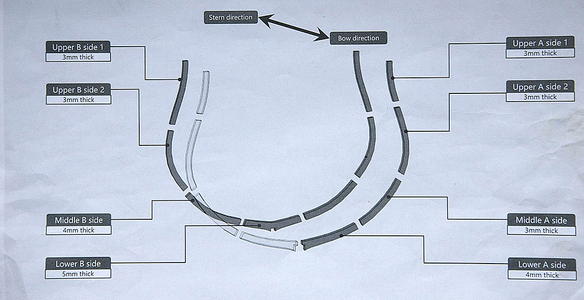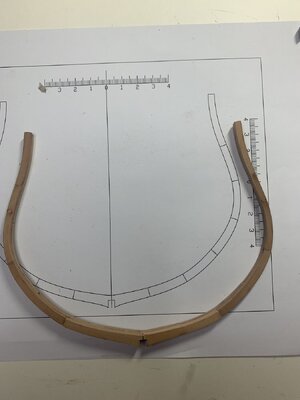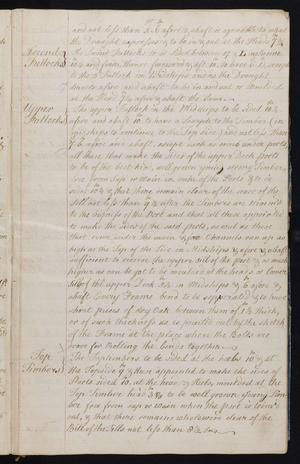- Joined
- Oct 2, 2023
- Messages
- 24
- Points
- 48

Hi all,
I have started the above POF kit and have completed the keel and have started on frame #30. I have completed it (apart from the last two top parts as Seen in the attached picture) and I am slightly confused as the upper parts are 3mm thick but the last two top parts (which I have not glued in yet) are 4mm thick. Is this correct? I have checked and double checked and I have removed the correct #30 parts from each of the 15 planks that contain the frame parts. Please see my picture below.
Thanks,
Iain
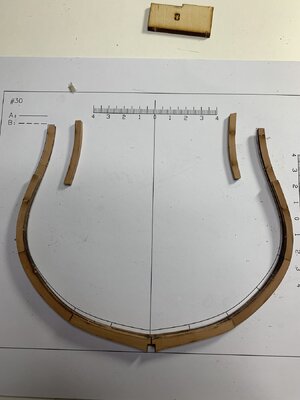
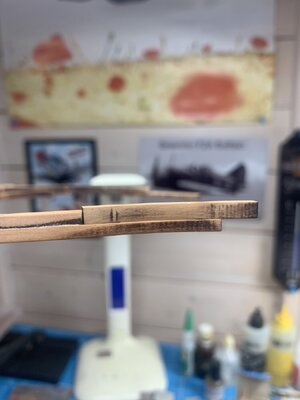
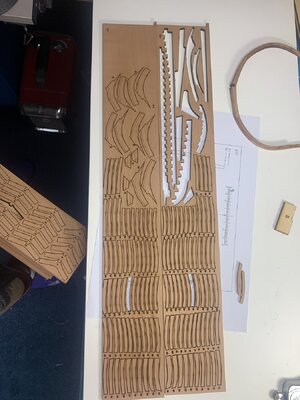
I have started the above POF kit and have completed the keel and have started on frame #30. I have completed it (apart from the last two top parts as Seen in the attached picture) and I am slightly confused as the upper parts are 3mm thick but the last two top parts (which I have not glued in yet) are 4mm thick. Is this correct? I have checked and double checked and I have removed the correct #30 parts from each of the 15 planks that contain the frame parts. Please see my picture below.
Thanks,
Iain



Last edited:


